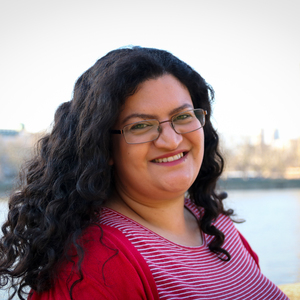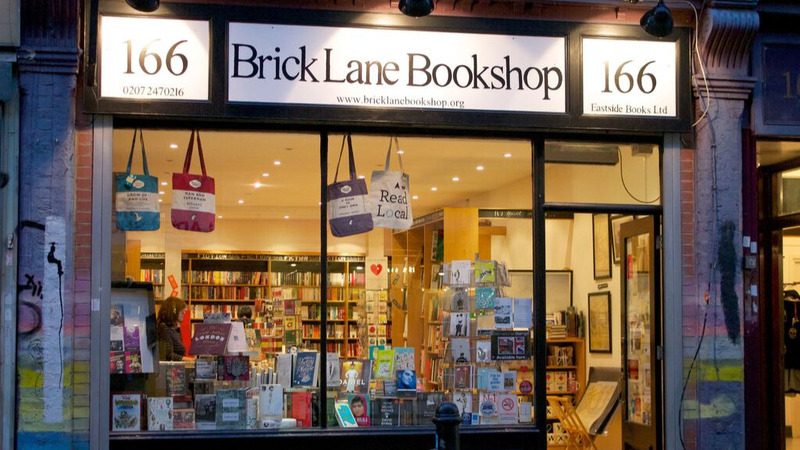You are viewing your 1 free article this month. Login to read more articles.
STEM topics infuse children’s titles after recent popularity surge
As a husband and wife duo launch a new publisher, QuestFriendz, a number of lists in the children’s books sphere reflect on the rise in popularity of titles with STEM themes, across fiction and non-fiction.

Caroline is deputy features editor at The Bookseller and chair of the YA Book Prize, as well as being a co-host of children's book radio ...more
As a new children’s publisher launches with a focus on science, technology, engineering and mathematics (STEM) subjects, existing presses and writers within the space report a growing interest in this strand of publishing across both non-fiction and fiction.
QuestFriendz was founded by husband-and-wife team computer scientist Dr Thomas Bernard and children’s author Lisa Moss after they struggled to find books for their young children that would help them develop foundational STEM skills. According to Moss, most titles they came across “depicted stereotypical lead characters such as young boys in white lab coats”, though The Questioneers series (written by Andrea Beaty and illustrated by David Roberts) and the Izzy Gizmo books (written by Pip Jones and illustrated by Sara Ogilvie) were notable exceptions.
The pair’s first title, SuperQuesters: The Case of the Stolen Sun, illustrated by Amy Willcox (to be published on 3rd May), marks the start of a young fiction adventure series. Moss believes this genre is “a great way to immerse children, especially younger children and reluctant readers, fully in the book and spark their interest in STEM learning… with the child engaging in learning without necessarily realising they are doing so”. Another ambition is to “help change children’s perceptions about science and engineering”. The titles feature ethnically diverse characters, with both male and female characters taking leading roles. QuestFriendz plans to include disabled and neurodivergent characters in future and to expand into non-fiction.
Children’s indie b small has a well-established series of STEM Starters for Kids activity books. Publisher Sam Hutchinson says of its origins: “STEM was a term that adults were using a lot and given that that’s our audience, we thought we would brand some science activity books as STEM.” After doing so, these titles “found their audience really quickly”, with the series now having sold in 24 languages. Hutchinson says: “Some countries instantly ‘get’ STEM and then other countries just don’t get it at all. It’s mostly Asia, Eastern Europe, America and Australia where STEM seems to be an acronym that’s used. But the markets where we would traditionally sell—like France and Spain and Scandinavia—have been the last ones to pick up on it. Some of them don’t actually include the STEM acronym on the books.”
A vital cog
STEM is a “really important strand” of fellow small press Magic Cat’s output, according to publisher Jenny Broom. It tries to differentiate its STEM offering from the rest of the market by showing how it “plugs into the real world and everyday family life, from a more nuanced perspective”. Broom cites Magic Cat’s latest title, Grow, as a good example of this as it presents key STEM ideas such as pollination and evolution through the lens of gardening. She explains: “Many parents buy books on these topics because they aren’t confident navigating these subject areas themselves, but their children are learning about them at school. There are fantastic publishers already doing an amazing job of unpacking the curriculum; for us the opportunity lies in reaching out to families who may not consider themselves science-savvy.”
Jenny Jacoby, a freelance editor and writer who specialises in covering STEM topics for children, also tries to relate these subjects to everyday life to engage young readers, and tries to include activities in her books that children can do themselves, as this is “empowering and a tangible way of showing that science is for everyone”. Jacoby has noticed more interest in STEM children’s publishing recently, with seven of her own titles being released this year. She says: “One of the things that this new era of science publishing is doing so well is the illustrations. Everything that I’ve been writing has been made to look so beautiful.” Interestingly, in her role as a part-time editor at Hot Key Books and Piccadilly Press, she has also seen more fiction that covers STEM topics, including Konnie Huq’s Cookie series.
Maybe STEM branding has worked well for publishers because it doesn’t necessarily put too much pressure on the child. It’s still all the stuff that kids like about science for their age range, but it just adds a little signifier to the parents that this is valuable
Katie Weeks, public engagement manager at independent scientific academy The Royal Society, agrees there has been a rise in children’s fiction with “a very heavy science component”. The academy administers The Young People’s Book Prize, which aims to promote literacy in young people and to inspire them to read about science. In recent years, the shortlist has included more fiction, such as Agent Asha: Mission Shark Bytes, written by Sophie Deen and illustrated by Anjan Sarkar, and Aimee Lucido’s In the Key of Code (both published by Walker), both with coding themes. Other notable trends in science-themed fiction include female inventors, as seen in Vashti Hardy’s Harley Hitch series (Scholastic), and Artificial Intelligence, with the likes of Kirsty Applebaum’s TrooFriend (Nosy Crow), Sophie Cameron’s Our Sister, Again (Little Tiger) and Elle McNicoll’s Show Us Who You Are (Knights Of).
Weeks feels that STEM publishing “gives children another route into science”, adding: “A lot of these books make it really accessible, and they are so different that there’s usually something for everyone.” While Hutchinson believes that “a child would get the same out of a book that didn’t have the STEM logo on it”, he admits that “contextualising science within the framework of an acronym that they and their family and teachers recognise” can be helpful. He expands: “Maybe STEM branding has worked well for publishers because it doesn’t necessarily put too much pressure on the child. It’s still all the stuff that kids like about science for their age range, but it just adds a little signifier to the parents that this is valuable.”
Author Chris Edge discusses his STEM influences
Caroline Carpenter meets author Chris Edge to discuss how his fiction is infused with educational ideas, which authors he looks to for inspiration and his latest novel Escape Room.
Why did you want to write books that incorporate science and maths?
It simply came out of the stories I wanted to tell, starting with The Many Worlds of Albie Bright, where I took a spark of inspiration from quantum physics to tell a story about a boy searching for his mother in parallel universes. I think science and stories approach the same questions from different angles, helping us to explore and understand the world around us.
Do you think it is important to have children’s fiction that champions STEM subjects?
Professor Brian Cox once said, “Science is too important not to be part of popular culture” and I think children’s fiction has an important role to play, not in championing STEM subjects, but by bringing the wonder that lies at the heart of science into the stories that children read, weaving these sparks of scientific wonder into novels filled with adventure, mystery and suspense.
What kind of research do you have to do when writing?
From reading New Scientist articles and popular science books on, for example, AI to speaking to scientists working in these fields, I try to immerse myself in the topic I’m researching. I get my novels fact-checked to ensure any scientific ideas I include are authentically presented.
How do you make the complex scientific and mathematical elements of your stories accessible for children?
I think it helps that I’m not a scientist! I have to teach my non-scientific brain to understand these sometimes complex theories, but then make use of these in the service of the story I want to tell. I think this is what helps young readers to subconsciously absorb these big scientific ideas as they are usually conveyed through the eyes of a child protagonist.
Your latest novel, Escape Room (Nosy Crow), was published in February. What is it about?
It is a story about finding the Answer and saving the world. It follows Ami as she enters The Escape, the ultimate escape room, but as the Host locks Ami and her teammates inside the first room, they quickly realise this is no ordinary game. What I love about escape rooms is the way they immerse you in another reality and I wanted to give readers the same immersive experience, taking them on a fast-paced, puzzle-solving adventure into a host of different realities.
Are there any other authors writing in the STEM space that you would recommend to young readers?
From M G Leonard’s entomological fiction to the fantasy stylings of Vashti Hardy, it’s really heartening to see how STEM-infused fiction is crossing genres in the middle-grade range. In recent years I have enjoyed books by Patience Agbabi, Darren Simpson, Alastair Chisholm, Lindsay Galvin and Elle McNicoll, while Malorie Blackman is an author I hugely admire.














